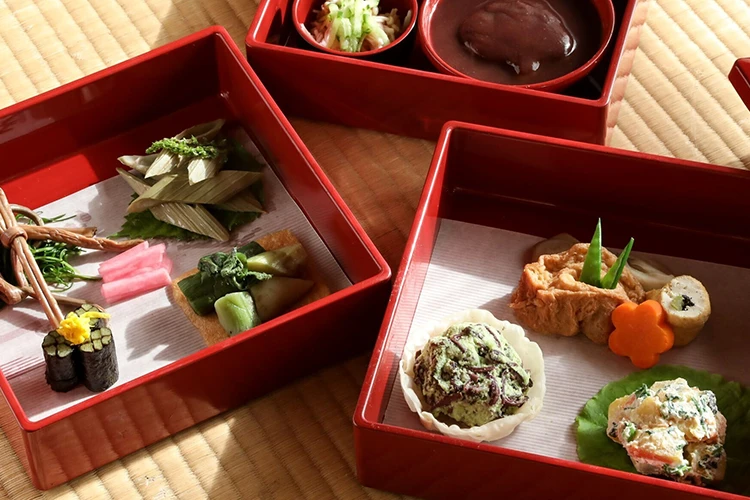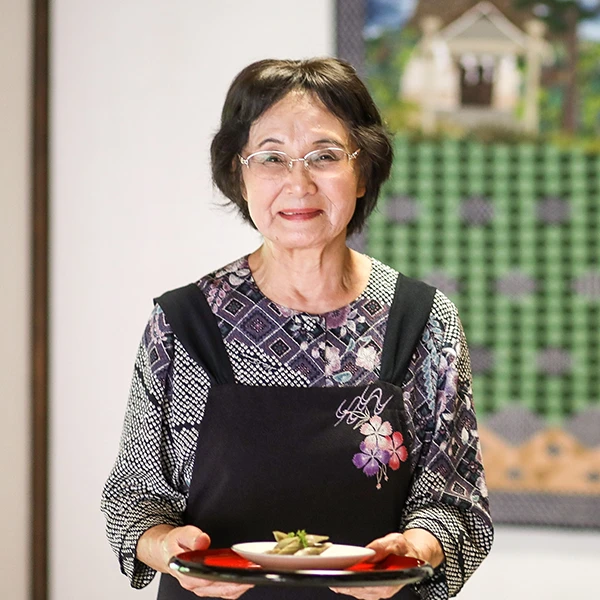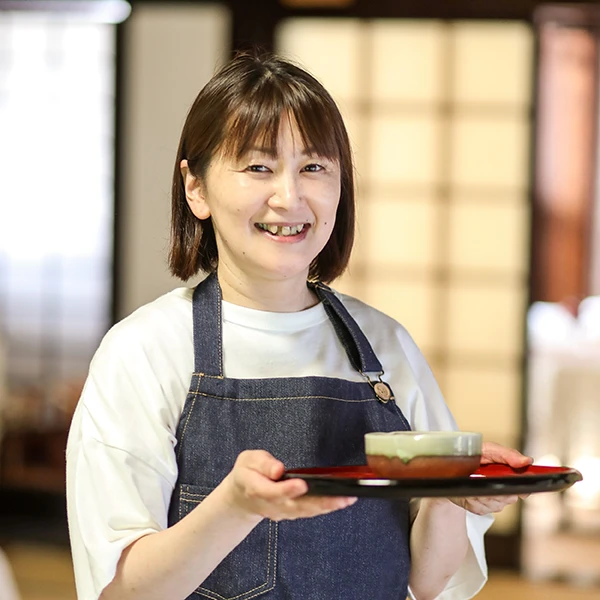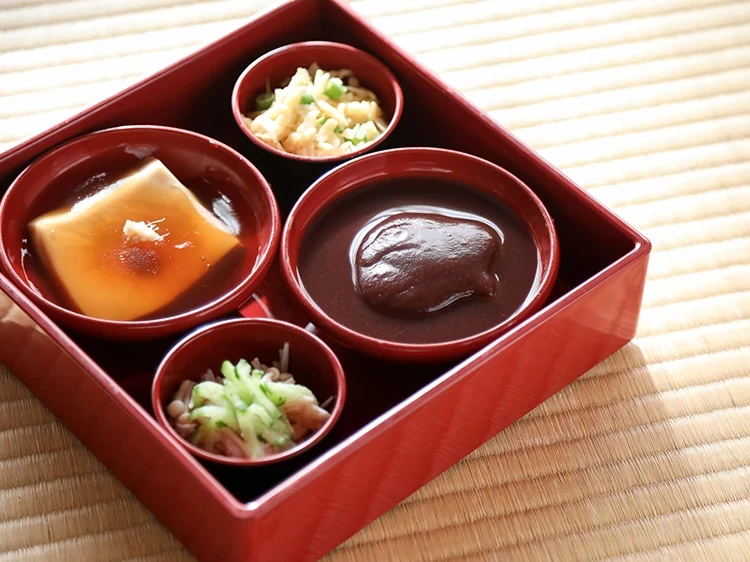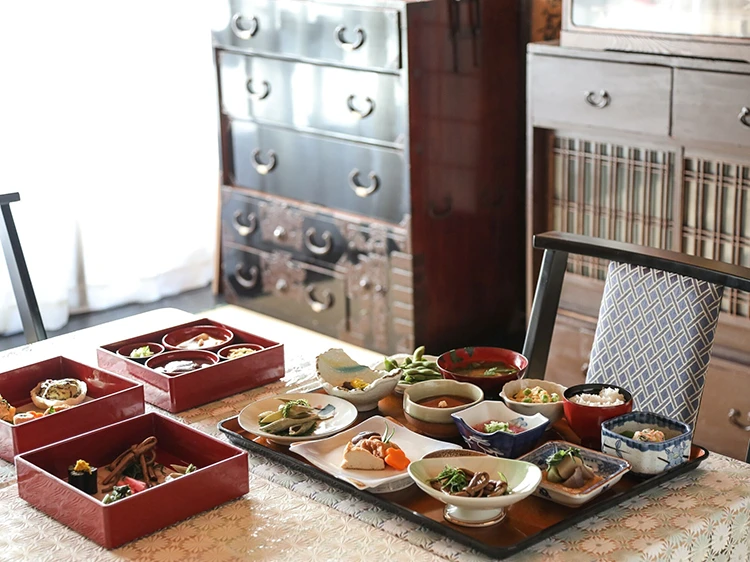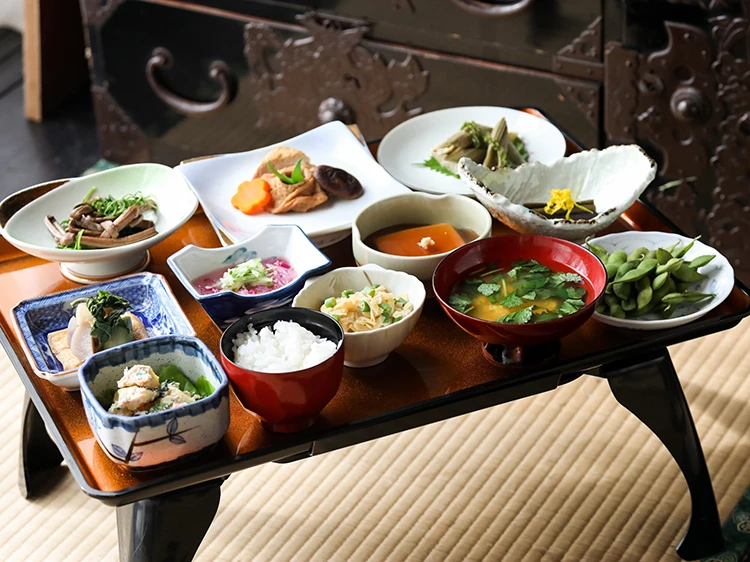Daishinbo Pilgrim’s Lodge
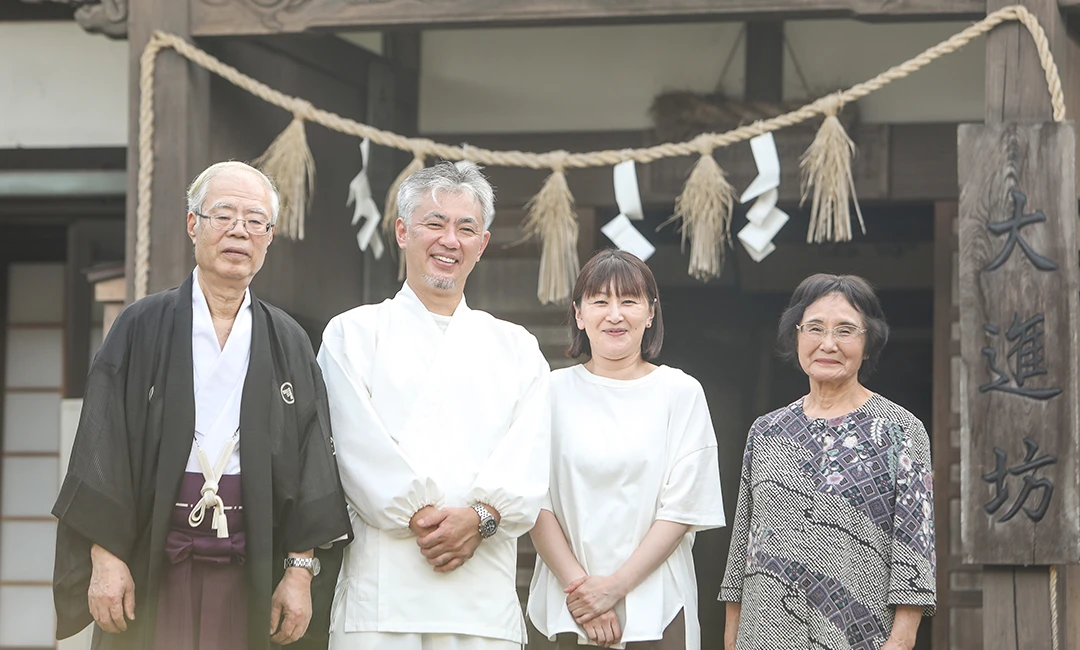
Daishinbo is a pilgrim’s lodge run by a yamabushi family located at the base of the Dewa Sanzan. Steeped in history and tradition, Daishinbo boasts a lineage of patrons dating back to the Edo Period (1603-1868) over 300 years ago.
With its distinctive gabled copper roof, Daishinbo’s main building still has the original foundations, pillars, and building frames from over 300 years ago. Here you can experience first-hand the culture of Mountain Worship passed on since the Edo Period.
1. Exclusive Pilgrim’s Lodge
Rituals and Pilgrimages

At Daishinbo you can experience Mountain Worship and yamabushi culture first-hand.
Take part in the morning ritual, or even the pilgrimages that have been a mainstay of the Dewa Sanzan for over 1400 years.
Yamabushi Sendatsu (Master)
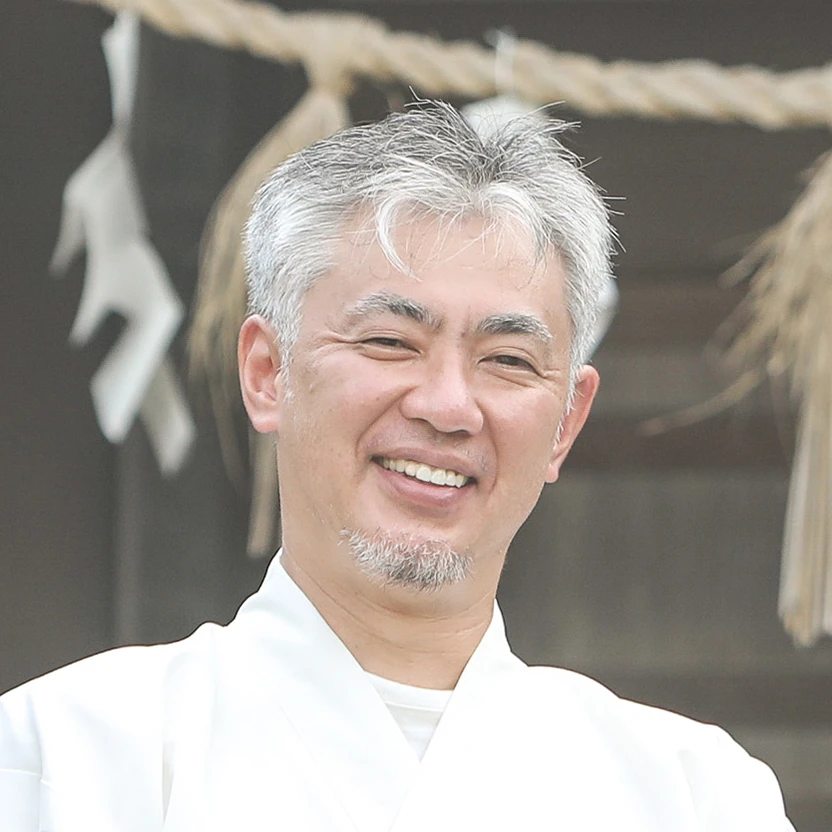
Kazuhiro Hayasaka17th generation Shukubo Daishinbo Master, Haguro Yamabushi
‘I assume when people hear the words ‘pilgrim lodge’ they think of high barriers to entry, or only people who have done yamabushi training being allowed to stay. However, Daishinbo welcomes people from all walks of life.
Our Shojin Ryori and morning rituals are exclusive experiences unavailable in traditional accommodation providers, so you should definitely come for a visit.
I’m looking forward to meeting you from the bottom of my heart.’
【Experiences】
- Feel free to join our morning ritual
- At our morning ritual we pray at the altar in the main hall for the health, safety, and fulfilment of wishes for our guests, calling out their names individually (at no additional cost)
- We also do special prayers with amulets for those who would like one (paid)
- Ask about our Goshuin stamps (paid)
- If you wish to do DewaSanzan Retreats, The Yamabushido Team offers a plethora of retreats in English on the Dewa Sanzan mountains.
Check Yamabushido (https://www.yamabushido.jp/) for more details.
2. Homemade
Shojin Ryori (ascetic cuisine)
that showcases the splendour of
the four seasons

One main characteristic of Dewa Sanzan Shojin Ryori (ascetic cuisine) is the frequent use of sansai, mountain vegetables and mushrooms, growing in the extensive beech forests nearby. Another characteristic unique to Dewa Sanzan Shojin Ryori is that since the ingredients are gifts from the kami (deities) as opposed to the buddha, you may sometimes find fish on the menu.
Daishinbo’s cuisine makes use of these abundant gifts from the mountains, lovingly preparing each meal by hand, ingredient by ingredient.
The meals incorporate a large variety of sansai such as Zenmai (flowering fern), warabi (bracken fiddleheads), Udo, Kogomi (ostrich fern), while featuring Tochi mochi (pounded horse chestnut rice cakes).
Made from a secret recipe, the freshly-prepared goma dofu ‘sesame tofu’ is especially popular and will leave you saying ‘Oishi’ (it’s delicious) just as countless others have over the years.
From chopping board to table,
the proprietress and
proprietress-to-be of
Daishinbo lovingly prepare all
Shojin Ryori meals by hand.
3. Both group and singular
rooms available
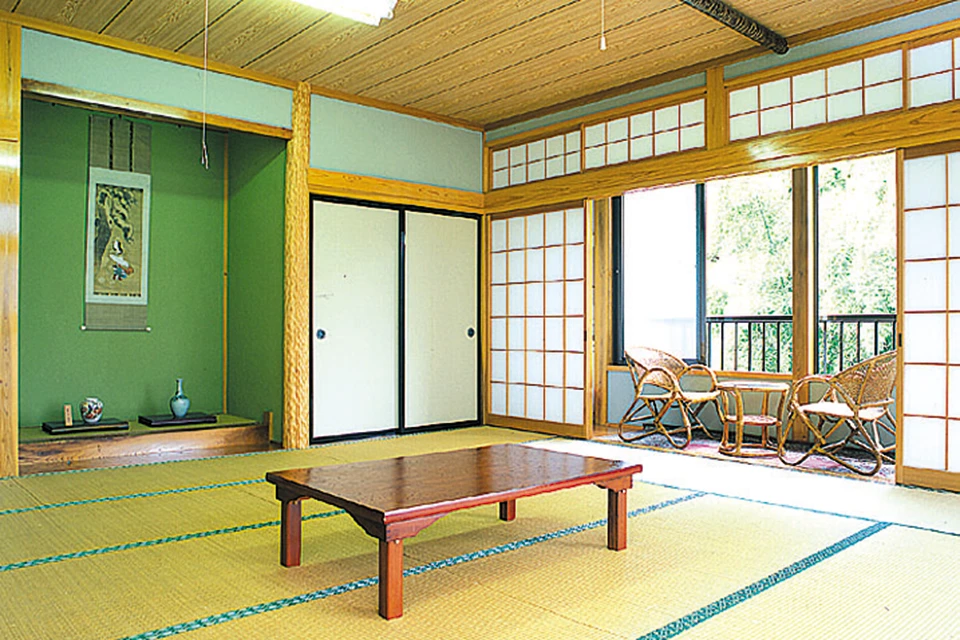
When you stay at Daishinbo, you won’t be sharing rooms with other guests. Each group is designated their own relaxing Japanese-style room.
Individual guests, couples, and families with children alike are all very welcome. We also provide rooms for company or school group excursions.
【Facilities】
- TV
- Air-conditioner and heater
- Wi-Fi
- Shared bath
- Some rooms come with toilets and sinks, some are shared
- Toiletries provided
- Bath towels, face towels, toothbrushes, pyjamas (Yukata) in each room
- Shampoo provided in baths
Pilgrim’s Lodges
Pilgrim’s lodges provide accommodation for Buddhist temples and Shinto shrines. Dewa Sanzan pilgrim’s lodges pride themselves on providing not only a place to stay, but also purification for body and soul for those entering the sacred mountains for worship.
Here you can get absorbed in an atmosphere completely different to that of daily life, pay your respects at the sacred altars, take part in prayers (such as at the morning ritual), and savour Shojin Ryori ascetic cuisine.
The Dewa Sanzan:
Japan’s Premiere Sacred
Ground of Mountain Worship
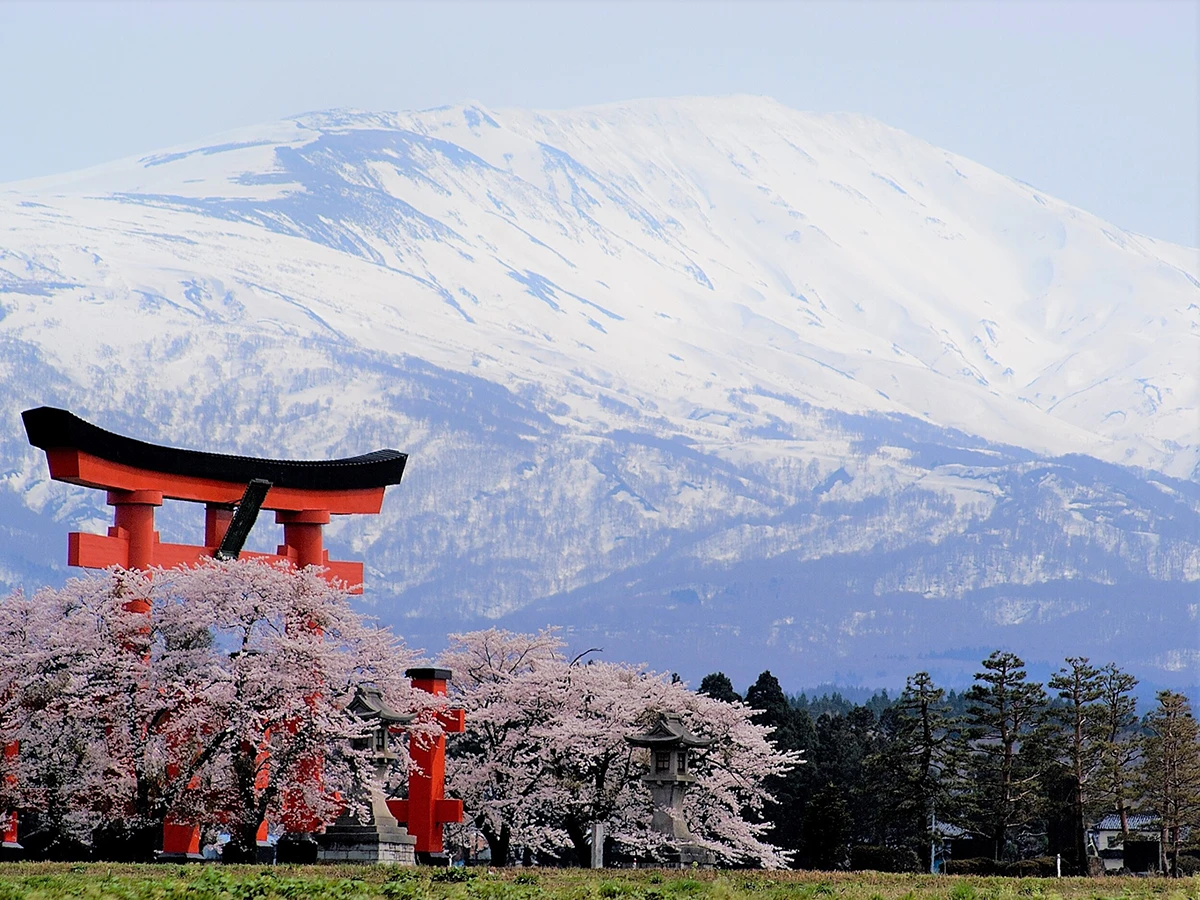
Since ancient times, the three mountains known as The Dewa Sanzan collectively; Mt. Haguro, Mt. Gassan, and Mt. Yudono, have been revered as sacred grounds for Mountain Worship.
It has been said that one can gain enlightenment and get metaphorically reborn but crossing the borders into Mt. Haguro, representing the world of the present, Mt. Gassan, representing the world of the dead, and Mt. Yudono representing the world of the future.
A rare location where even today you can experience first-hand the culture of Mountain Worship and Yamabushi, the mountains are a spiritual location countless have visited to pay their respects and pray for good health.
Room Rates
One night with dinner and breakfast
- Junior High School Age and Above
- One room with up to 1 guest: from 12,100 JPY (tax incl.) One room with up to 2 guests: from 11,000 JPY per person(tax incl.) One room with three or more guests: from 9,900 JPY per person(tax incl.)
- Elementary School Age
- from 7,700 JPY per person (tax incl.)
- Under Elementary School Age
- Meals and bedding: from 4,600 JPY per person (tax incl.)
Meals only: from 4,100 JPY per person (tax incl.)
Bedding only: from 1,000 JPY per person (tax incl.)
No meals, no bedding: Free
Accommodation Schedule
- ※The schedule may be changes due to various circumstances.
<Day of Arrival>
- Check-in
- 3pm
- Dinner
- 6pm to 8pm (in the dining hall)
- Bathing facilities
- 5pm to 10pm (subject to change)
<Next Day>
- Morning prayers
- 7:00 am to 7:30 am
- Breakfast
- 7:30 am to 8:30 am
- Check-out
- 10 am
Facilities
-
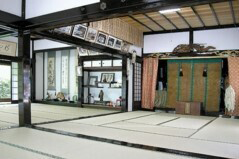
Altar, Main Building, Large Room
Where rituals take place.
-
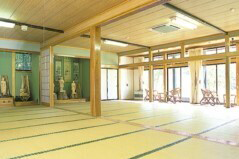
New Building, Large Room
Large room able to be partitioned off with screen doors to create smaller individual rooms.
-
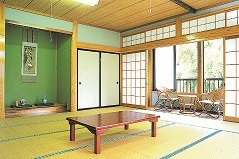
New Building, Medium-size Room
Spacious Japanese-style room where you can relax.
-
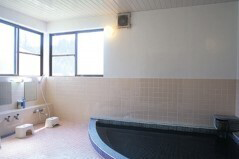
Bathrooms
Ease the fatigue from your journey or training in the large baths.
-
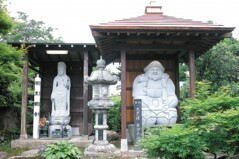
Daikoku-sama, Haguro Kan’on Hall
-
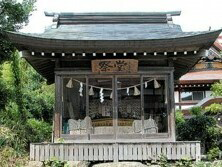
Matsurido Hall
-
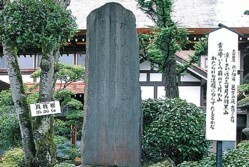
Matsuo Basho Sanzan Memorial Monument
-

Commemoration Tower
Address and Contact Details
- Address
- 997-0211 Yamagata-ken, Tsuruoka-shi, Haguro-machi, Toge, Toge 95
- Closed
- Winter season; from November to early April
- Phone
- 0235-62-2372
- Fax
- 0235-62-3465
Accessing Daishinbo
- By train
- Tokyo via Niigata to Tsuruoka Station (3 hours 45 minutes)
[Joetsu Shinkansen, Uetsu Honsen, then 25 minutes from Tsuruoka Station by car]
- By car
- About 500 km from Tokyo
[Tohoku Expressway to Yamagata Expressway, get off at Shonai Asahi Interchange, then take the Super Nodo road 15 km]
- By plane
- One hour from Haneda Airport
[40 minutes by car from Shonai Airport]
Frequently Asked Questions
- Do you accept solo female travellers?
- Yes. Rooms also come with locks for safety.
- Do you have a car park?
- Yes. There is enough space for around 30 cars.
- Do you do transfers from the nearest train station?
- No, we do not. Please come by car or on the local bus to Mt. Haguro. If you come by bus, Daishinbo is about one minute on foot from the Sakura Koji stop.
More details can be found on Shonai Kotsu’s website.
- Do you have WiFi?
- Yes, we do.
- Is it true I have to turn my phone off?
- Members of the general public do not have to turn off their phones, you can use them as per usual. However, those coming for training or other such experiences may be asked to turn their phones off according to the rules of their training.
- Do I need to prepare anything special for a stay?
- No. Come as you normally would. Pyjamas (Yukata), towels, toothbrushes, etc. are provided in rooms.
Places Nearby
-
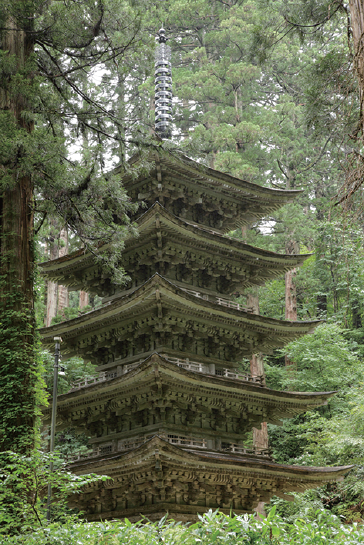
-
National Treasure Five Story Pagoda
Mt. Haguro’s Five Story Pagoda is the oldest tower in the Tohoku region, originally constructed by Taira no Masakado between 931 and 937, then in 1372 it was reconstructed by Fujiwara. The three ken, five storied pagoda is a classic elegant wooden masterpiece.
-
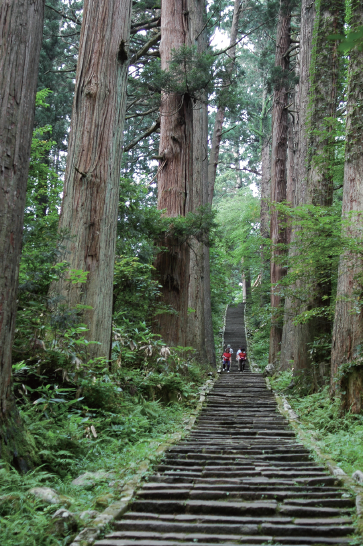
-
Stone Stairway and Cedar Tree Avenue
The stone stairway is the main approach to Dewa Sanzan Jinja shrine stretching 1.7km up Mt. Haguro. The 2,446 steps are dwarfed either side by a line of 350-500 year-old cedars. This is a must-see location according to the Michelin Green Guide Japan (also a Nationally Designated Special Natural Monument).
-

-
The Gassan Plateau Line
he Gassan Plateau Line is a mountain trail stretching 20km up to Gassan Hachigome, the eighth station of Mt. Gassan. The expansive panorama of the Shonai plains becomes more and more grand as you go higher up the mountain.
-
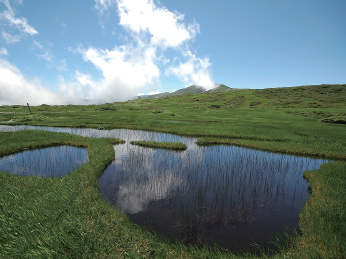
-
Midagahara Wetlands
The Midagahara Wetlands has fields of flowers and small ponds dotted throughout. Here you can see peat moss, round-leaved sundew, cotton grass, Kinkoka (Narthecium asiaticum), and pogonia, as well as flowers such as Hinazakura (Primula nipponica), avens, and the Nikko daylily.
-
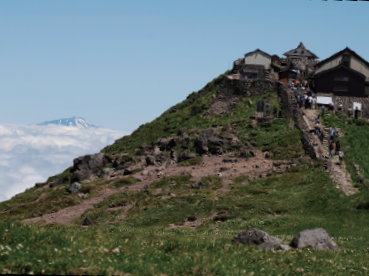
-
Gassan Jinja Hongu (Gassan Main Shrine)
Tsukuyomi-no-Mikoto is enshrined at Gassan Jinja Hongu located at the summit of Mt. Gassan. The shrine has stone walls that make it a solid structure.
-
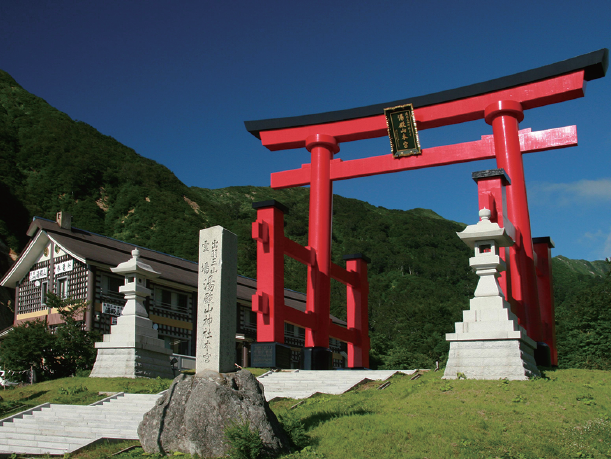
-
Mt. Yudono
Mt. Yudono is a mysterious location bound by the rule ‘no speaking of, nor asking about’ since ancient times. There is no shrine building, but rather a spring from which sacred hot water gushes out, treated as the object of worship. Mt. Yudono is known as the Dewa Sanzan’s Okunoin shrine, and has been visited by innumerable worshippers over the centuries.


